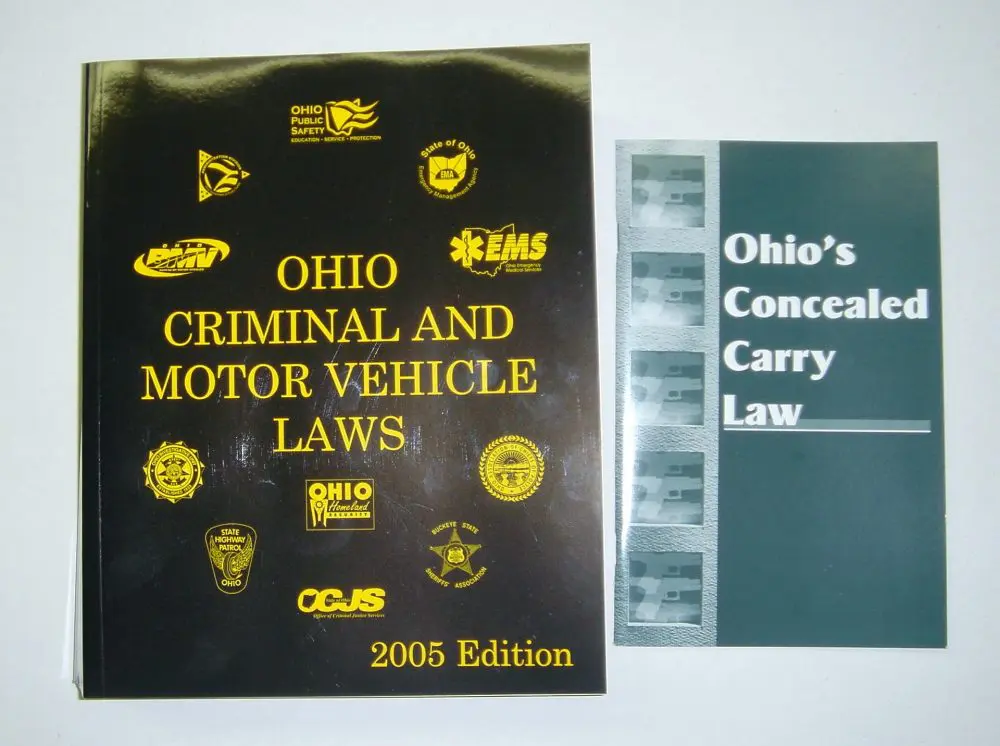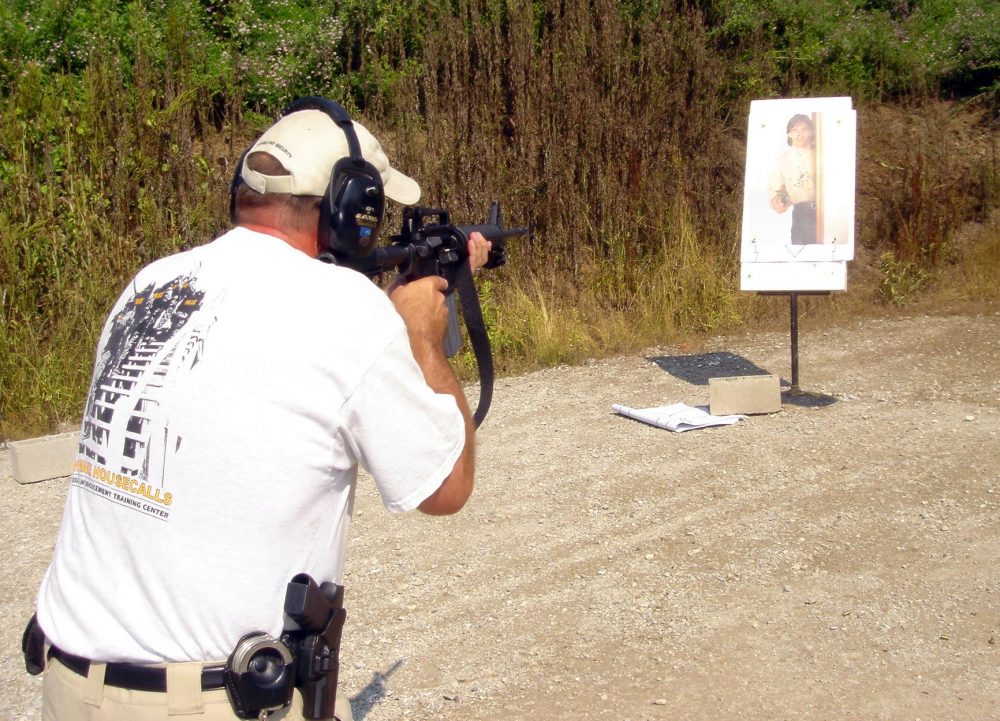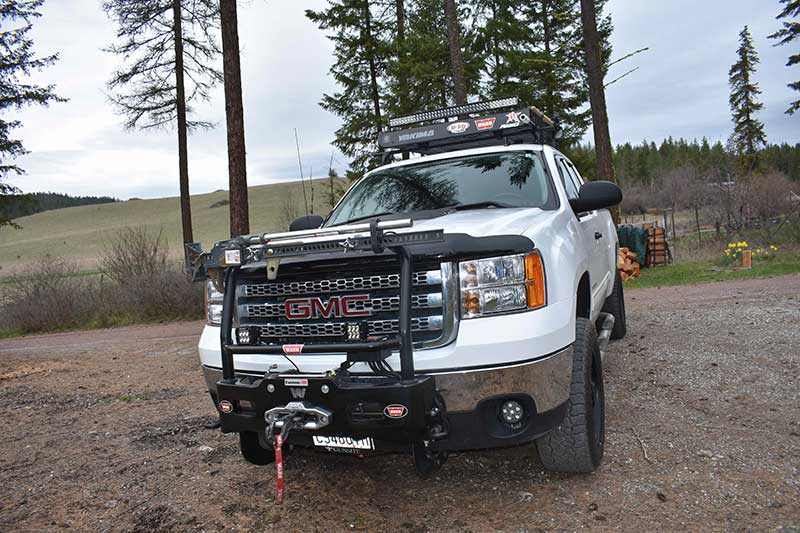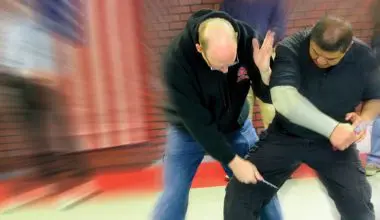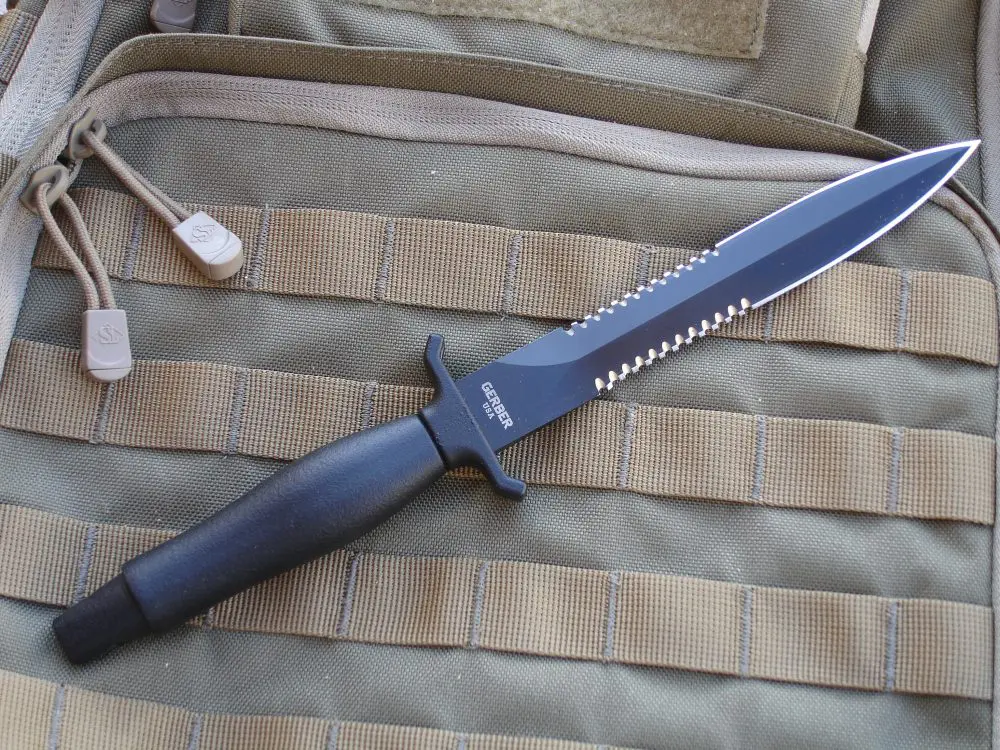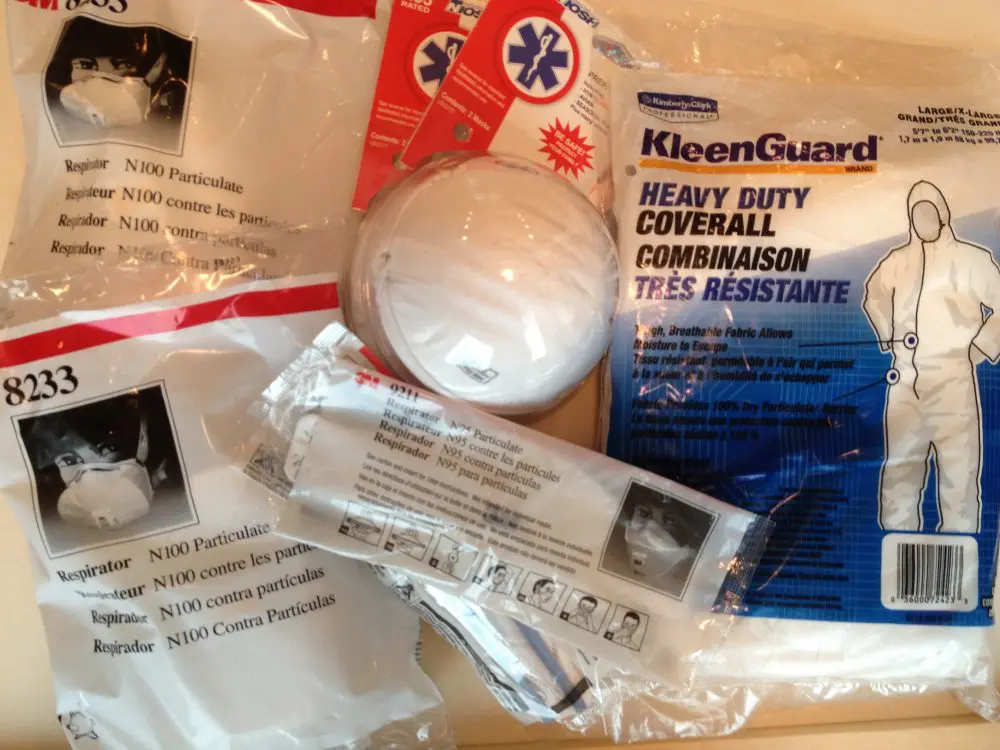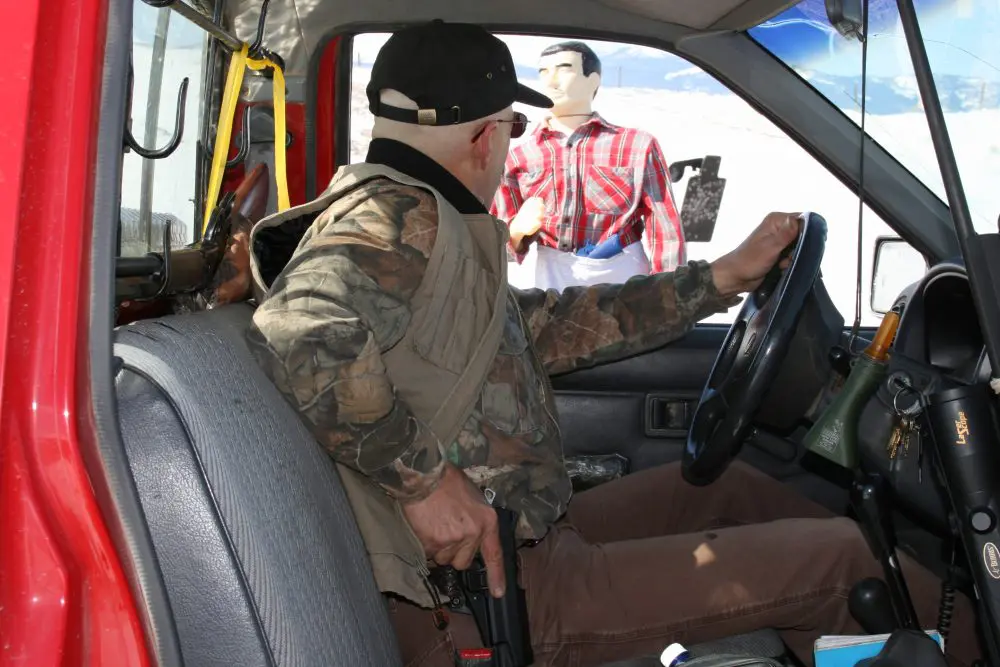Pick up any firearms or martial arts magazine and check the advertisements. You’ll be sure to see something like, “Learn secret ninja techniques to stop any outlaw biker thug” or “Be a spec-op badass after watching one tape” or, as relates to shooting, “Forget all the basics and follow our simple plan to learn real combat shooting techniques to stop any suspect.”
Among the charlatans and rip-off artists are there good videos, courses and books advertised as well? You bet there are. Separating the wheat from the chaff is the task of this article. Focusing on the components of self-defense success is the method we’ll use.
Slim pamphlet on CCW laws in Ohio in no way compares with voluminous Ohio Revised Code. Although you don’t need a law degree to be able to defend yourself, you do need to know the law.
Table of Contents
SHOOT TWO-HANDED FROM EYE LEVEL WHEN POSSIBLE
We’re told by some that shooting from the hip is faster and is the way such past luminaries as Bill Jordan, Jelly Bryce, William Fairbairn and Rex Applegate suggested we should shoot. There is no doubt in my mind that they were accomplished shooters who had combat experience. Jelly Bryce in particular was, in his day, almost a one-man FBI SWAT team.
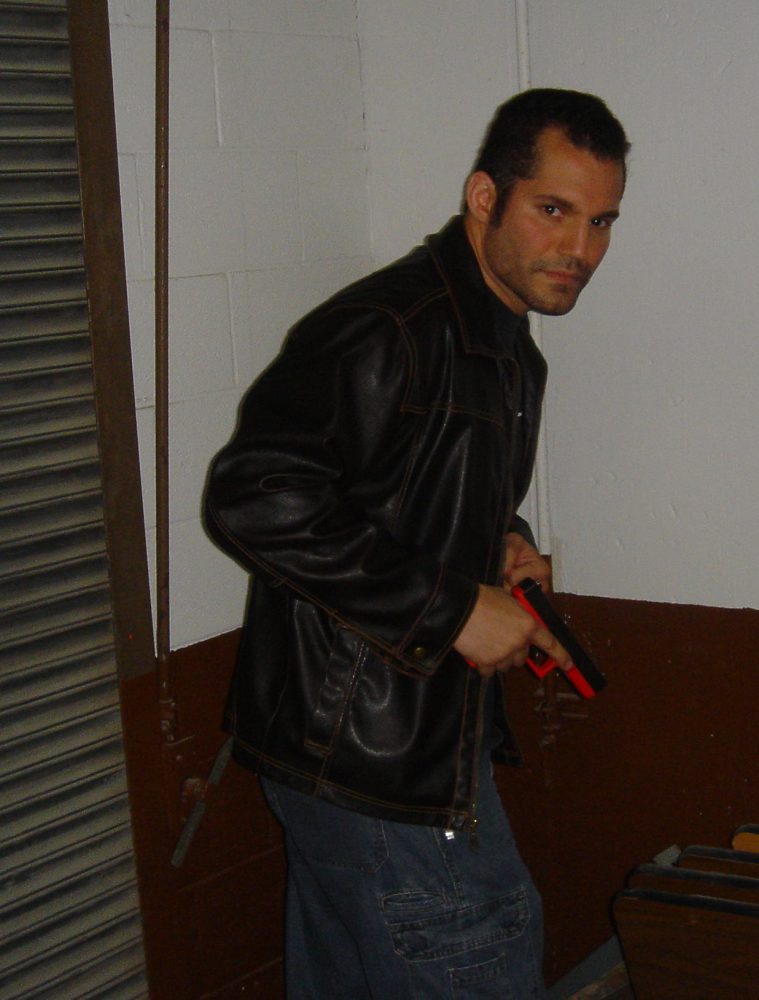
According to the book The Deadliest Men by Paul Kirchner (Paladin Press, 2001), Delf A. “Jelly” Bryce was a lifetime shooter and hunter who honed his skills practicing for hours a day in front of a mirror. Based on his natural eye/hand coordination and dedication to developing this skill, he was able to succeed at hip shooting when most people fail. I spoke to a retired special agent and firearms instructor who was trained in the FBI method, which wasstrongly influenced by Bryce at that time. He spoke about the average agent’s difficulty in getting accurate hits, instead frequently putting rounds in the dirt below the target or shooting over the target’s shoulders. Once the FBI adopted a two-handed, eye-level shooting style, however, hits on target at the range and hits on suspects on the street improved dramatically.
The difficulty with hip shooting, as Colonel Rex Applegate commented, is in always getting the same alignment of the wrist and elbow. Shooting below eye level fails to take advantage of the natural eye/hand coordination. Applegate said in reference to shooting below the line of sight, “This is more difficult to master and inherently less accurate than bringing the gun to eye level, therefore it is not recommended.” Applegate believed in “shooting through the pistol,” i.e. bringing the pistol to eye level. He referred to hip shooting (body point) and anything under eye level as compromise positions, which were only reverted to when the shooter didn’t believe they had enough time or distance to bring the pistol to eye level. Although Applegate was himself a one-handed shooter, he stated that the modern isosceles stance had proven itself on the battlefield and could be reverted to under stress.
Certainly a shooter must be able to get rounds on target regardless of distance, situation and time, but if at all possible get two hands on the handgun and “shoot through the pistol.” If time and distance permit, confirm your sight alignment prior to shooting.
TRAIN AS IF YOUR LIFE DEPENDED ON IT
When training for self-defense on the range, treat your target as if it were a living, dangerous suspect intent on your destruction. Don’t treat it as a piece of paper. Expose too much of yourself in real life while behind cover and you can get shot, therefore on the range use cover properly. Stand in one place out in the open when conducting a reload on the street and you make an easy target. Practice your draw by working from an unsnapped holster and you’re sure to flounder when an armed suspect is attempting to murder you. The list of “range habits” that detract from your survival is long—avoid them by training as if your life depended on the skills you’re developing.
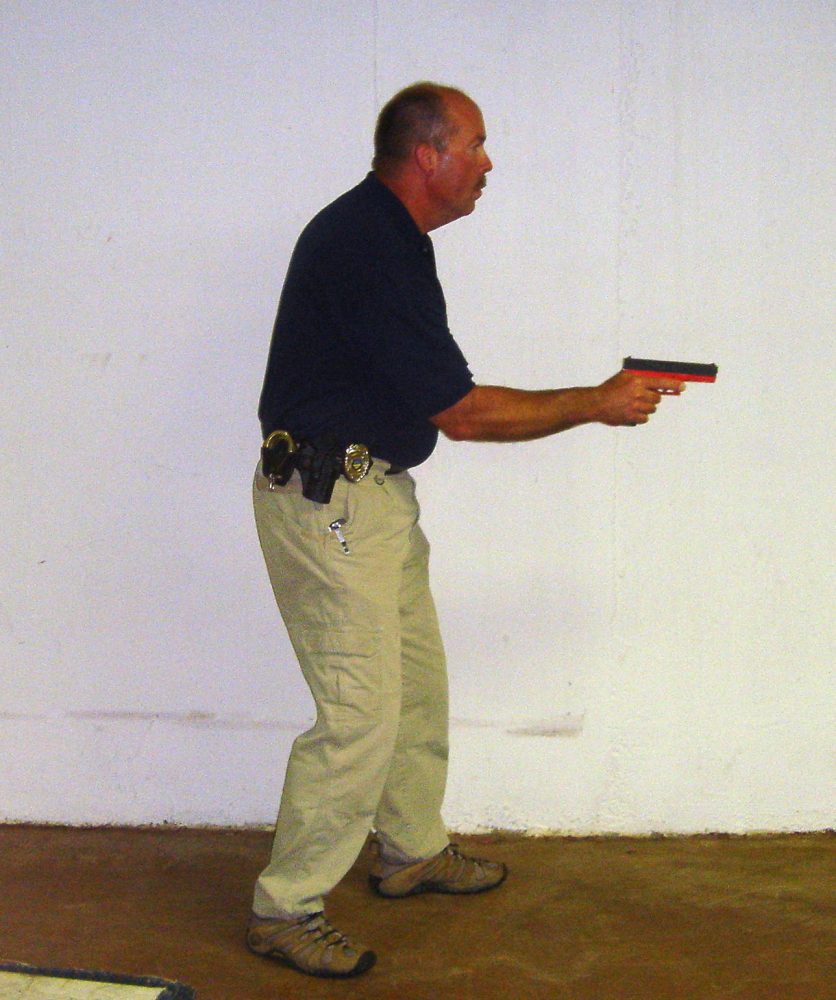
Recently while teaching a carbine instructor program, I had a conversation with a veteran SWAT copper from a big city. I had commented that too many officers were practicing reloads by swapping magazines out of a holstered pistol. He came up to me on a break and confirmed that his agency’s academy cadets were trained in this fashion. The reason was simple—it’s safer. However, while the administrative reload is safe on a line in a basic academy, if an officer in a shooting performs a reload this way based on this faulty practice, he can be worse than unsafe, he can be dead. Training should be thought of as small wars that prepare us mentally and physically for the large war that may one day come.
AWARENESS AT ALL TIMES, AVOIDANCE IF POSSIBLE
If you go into an outlaw biker bar or an urban lounge well known for its violence, you may become the recipient of violence. Furthermore, if you stay in a location and ignore warning signs after violent action has occurred, you may also be on the receiving end. You could be completely innocent. You could be trying to extricate yourself from the area and be shot in the back by an errant round. You could be standing off to the side of a bar fight and get hit in the head with a thrown bottle or stabbed during a melee.
I remember a video of an innocent citizen who, having become lost in a city he didn’t know, wandered into a gang’s territory only to be brutally and savagely beaten. His only “offense” to the gangsters was walking up a sidewalk in their neighborhood—yet he nearly lost his life. His lack of awareness and avoidance made him a victim. It is hard enough to protect yourself and your loved ones from violent attack in the best of situations, so don’t make it any easier for the bad guys. Deny them the opportunity by not entering their turf and by being constantly attuned to your environment and the people in it. Trust your gut if you get those feelings that a dangerous or violent situation is developing. Just because you’re armed, don’t let the pistol on your hip create the feeling of a mental force field that will protect you.
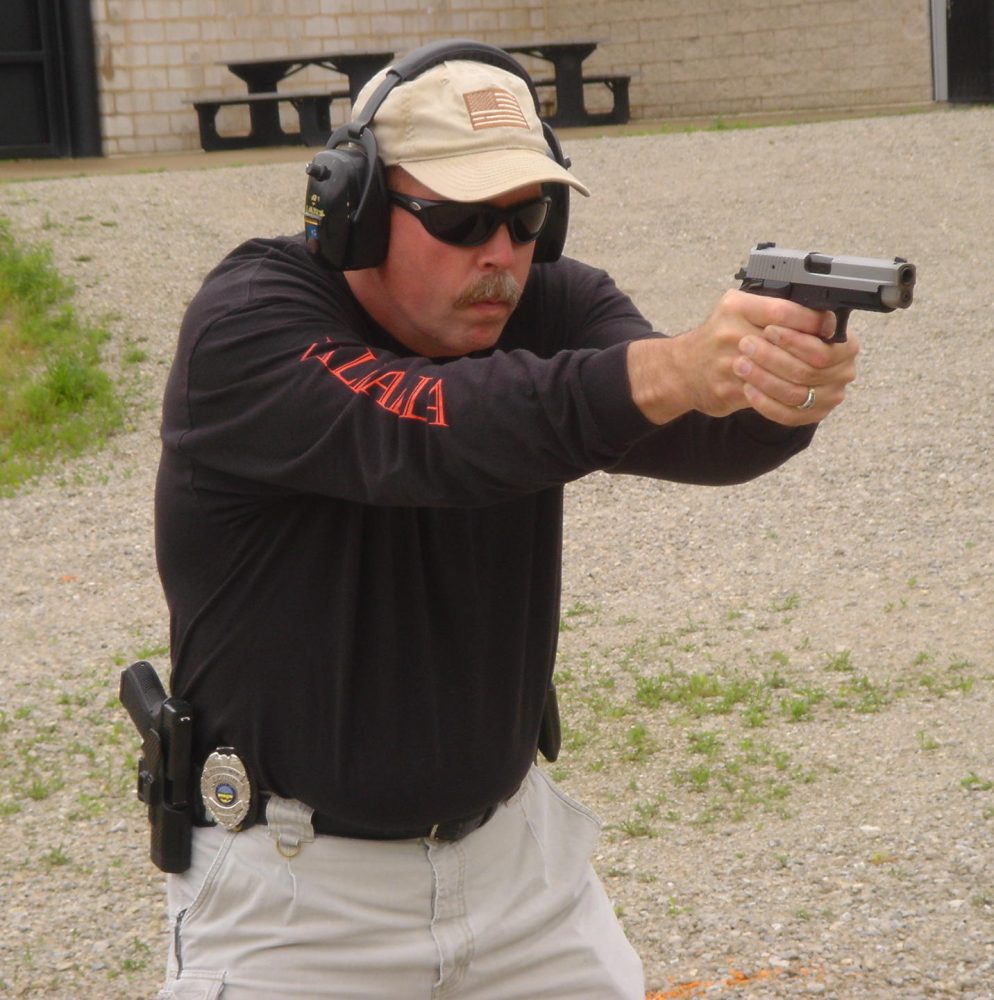
PRACTICE WITH A FLASHLIGHT
The fourth of the basic firearms rules is “Be sure of your target and beyond.” Pay attention to the nightly news and the saying, “Things that go bump in the night” will make a lot of sense. Criminals are lazy opportunists. They strike the weakest of us at our most vulnerable time. As relates to the above point on awareness, failure to pay attention to your environment can get you killed. So too, failure to prepare and train to overcome adverse lighting conditions can get you killed or result in tragedy.
Rather than being a “bullet magnet,” a flashlight is a fundamental piece of equipment that can allow you to find your way, locate a potential suspect, distinguish friend from foe, assist in getting your shots on target and disorient your potential assailant.
Imagine you are sound asleep late at night. You hear the sound of breaking glass. You arm yourself and respond. As you arrive at the top of the stairs, you look down only to be confronted by a figure coming up with what appears to be a gun in his hand. You fire. Upon switching on the lights, you are horrified to discover that it is your son with his cell phone in his hand — or perhaps I should say it was your son. Being a savvy gun person, you know that the preceding story has happened before (and tragically is likely to happen again) to law-abiding homeowners who fail to train with a flashlight. The deleterious effect of lighting on vision and performance means that a man with 20/20 vision can essentially be blind for up to 32 minutes until his eyes become accustomed to the dark. Even then, all that he may see is the outline of a potential suspect—not if they are in fact a suspect or if they are armed. Shootings by and large occur in subdued lighting—maximize your performance by equipping and training with a suitable flashlight.
BE SURE OF THE LAW
Police officers and citizens alike are held to the standard that ignorance of the law is no excuse. This accountability means that good intentions are not enough—you must know the law. You must educate yourself on the parameters of use of deadly and non-deadly force. Having studied this area as a law enforcement trainer for a number of years, I can state confidently that if your studies are limited to reading a pamphlet handed out in a CCW class, you are not prepared.
Law enforcement personnel and private citizens will be judged from a reasonableness perspective, i.e. would a reasonable person or officer have done the same or similar in the same circumstances. Your knowledge of the legal aspects of use of deadly force will help you make a sound decision during an incident and will give you confidence that you’re doing the right thing as you are facing a threat. The practical aspects of delivering deadly force on target are one thing, but the legal issues will resound long after the shots are fired. Expect a legal investigation into the incident with you possibly as the suspect. Expect a civil suit as a result and arm yourself with the knowledge of when you can and can’t use deadly or non-deadly force.
Post-incident, this knowledge (along with the services of a good attorney trained in these matters) will help you protect your rights while at the same time assisting you in documenting the “totality of the circumstances” that created a deadly force situation. In today’s litigious society, failing to prepare properly by thoroughly understanding your state’s statutes could result in imprisonment and the loss of everything you’ve worked hard to provide your family.
Treat a paper target like a real foe. Don’t develop bad range habits that will endanger your winning an armed encounter.
CONCLUSION
Good advice and good training are priceless. You can learn many things from books, training tapes and training programs. Always vet these materials and the authors or instructors to make sure they are who they claim to be. In addition, always re-examine the training and material from a common-sense perspective. Ask yourself, “Can I make this work?” and “Will this concept or tactic survive on the street and in court?”
Professional and legitimate trainers and experts will acknowledge others in the field with a, “Good training” or “Good instructor” comment. Beware the promises of quick results that stray from the tried and true, and in all things remember, “Buyer beware!” Your life may depend on it.
